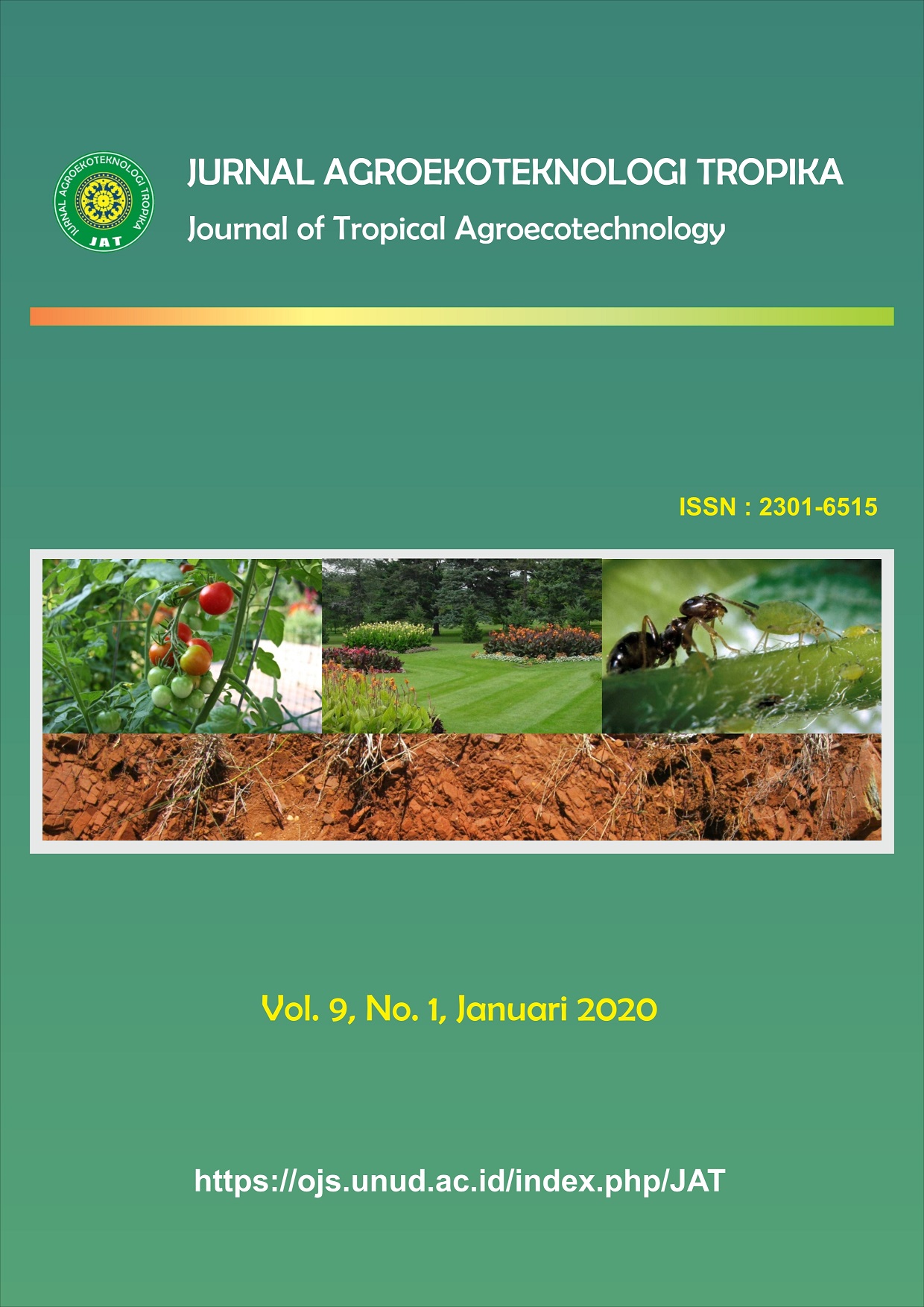Identifikasi Virus Penyebab Penyakit Mosaik pada Tanaman Melon (Cucumis melo L.) di Bali
Abstract
Identification of Viruses that Causes Mosaic Diseases in Melons
(Cucumis melo L.) in Bali
The aims of this research was to identify of some virus that infects melons in
Bali. The first step of this research was to take samples in Jembrana Regency, Tabanan
Regency, Gianyar Regency, Denpasar City, and Badung Regency. The next step was
doing virus detection at Laboratory of Plant Diseases, Faculty of Agriculture, Udayana
University. Variations of symptoms found in the field were mosaic, yellow leaves,
malformations, and burning spots on the leaves. The percentage of virus attacks in
Gianyar and Badung was the highest percentage (60.00%), Jembrana (57.14%),
Denpasar (42.85%), and Tabanan (37.50%). To know type of virus that causes this
disease, molecular identification was conducted. Extraction was the first step to get
total RNAs from symptomatic leaves. Total RNAs was transcribed into
Complementary (c) DNAs using reverse transctiption-polymerase chain reaction (RTPCR)
technique. Polymerase chain reaction (PCR) was conducted using cDNA and
three primer pairs of CABYV-489-F/Pol-G-R, MABYV-262-F/Pol-G-R and
CIFOR/CIREV. Primers would be use to amplified a part of coat protein. CABYV489-F/Pol-G-R
and MABYV-262-F/Pol-G-R is specific primer, and CIFOR/CIREV would be use to amplified gene
of Potyvirus. Based on the results of molecular with
PCR it was found that melons in Bali were positively infected with viruses from the
Potyvirus group with a size of around 683 bp in samples from Gianyar and Denpasar.



